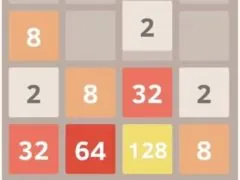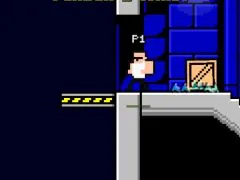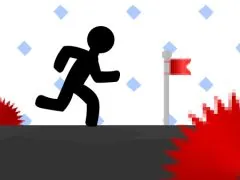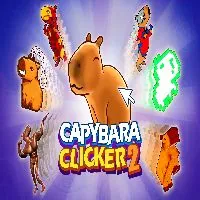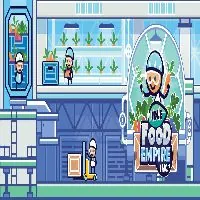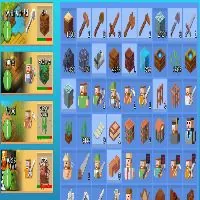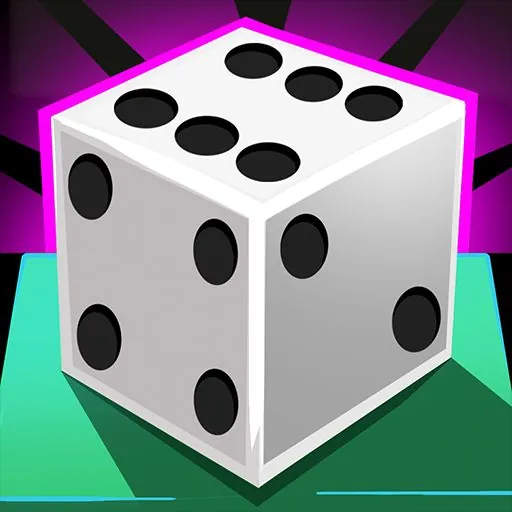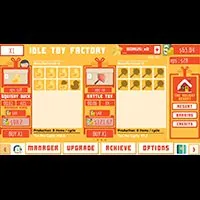HAPPY ROOM
SIMILAR GAMES
Description
Happy Room - GitHub Games
About Happy Room - GitHub Games
Happy Room presents a darkly comedic sandbox environment where players conduct weapon and trap testing on clone test subjects. Available through GitHub Games, this title delivers a unique blend of strategic planning and chaotic experimentation. Within a virtual laboratory, you'll discover an arsenal of dangerous and unconventional tools designed to inflict maximum damage.
The gameplay revolves around strategically arranging lasers, saws, explosives, and even black holes to create intricate and destructive sequences. Each level presents challenging goals that demand careful consideration of trap placement and creative combinations. The game encourages players to push the boundaries of physics and engineering to achieve the desired outcome.
Gameplay Mechanics of Happy Room
The core of Happy Room's gameplay is its focus on experimentation. Players are given a budget and a wide array of destructive tools. Success hinges on understanding how these tools interact with each other and the environment. Simply placing a laser isn't enough; you need to consider angles, power levels, and potential chain reactions. The game features:
- Sandbox Environment: Complete freedom to build and experiment with your deadly creations.
- Diverse Arsenal: A vast selection of weapons, traps, and environmental hazards.
- Challenging Goals: Each level presents unique objectives that require strategic planning and execution.
- Physics-Based Simulation: Realistic physics engine ensures unpredictable and often hilarious outcomes.
- Customization Options: Adjust parameters like gravity, clone durability, and weapon power.
Strategic Placement and Synergies
Effective trap design in Happy Room requires careful planning. A simple row of saws might inflict some damage, but combining them with a conveyor belt and a well-placed laser will create a far more devastating effect. Consider the following synergistic combinations:
- Saws and Conveyor Belts: Create a continuous stream of damage.
- Lasers and Mirrors: Redirect and amplify laser beams for pinpoint accuracy.
- Explosives and Propulsion: Launch clones into walls or other hazards.
- Black Holes and Gravity Fields: Manipulate the environment to maximize damage.
The Arsenal of Destruction: Weapons and Traps
Happy Room boasts a substantial collection of tools designed for mayhem. Each weapon and trap possesses unique characteristics and attributes that players must master to achieve optimal results. A detailed look at some key components includes:
- Lasers: Precise and powerful beams of energy that can cut through almost anything.
- Saws: Rotating blades that inflict continuous damage.
- Explosives: Detonate with varying degrees of force and range.
- Acid: Corrosive liquid that slowly melts away anything it touches.
- Electrocution Devices: Deliver powerful shocks that can incapacitate or kill.
- Spikes: Impale clones with deadly precision.
- Crushers: Apply immense pressure to obliterate anything in their path.
- Black Holes: Singularities that warp gravity and consume matter.
Advanced Weapon Combinations
The true potential of Happy Room's arsenal is unleashed when weapons are combined in creative and unexpected ways. For instance, a laser can be used to trigger an explosive, or a black hole can be used to pull clones into a field of spikes. Some advanced combinations include:
- Laser Grid: A network of interconnected lasers that create a deadly maze.
- Explosive Chain Reaction: A series of strategically placed explosives that detonate in sequence.
- Gravity Trap: A combination of gravity fields and black holes that manipulate clone movement.
- Acid Bath: A pool of acid that slowly dissolves clones, leaving no trace behind.
Clone Durability and Customization
While the primary objective is to inflict damage, Happy Room also allows players to adjust the durability of the clone test subjects. This customization option adds another layer of challenge, as players must adapt their strategies to account for varying levels of resilience. Modifiable parameters include:
- Health Points: The amount of damage a clone can withstand before being destroyed.
- Armor: Protective layers that reduce the impact of certain types of damage.
- Regeneration: The ability to slowly heal from injuries.
- Reaction Time: The speed at which clones respond to environmental changes.
Adapting to Clone Resilience
When dealing with highly durable clones, players must focus on inflicting sustained and cumulative damage. This may involve creating elaborate traps that slowly wear down the clone's health, or using weapons that bypass armor and deal direct damage. Consider the following tactics:
- Focus on Weak Points: Target vulnerable areas to maximize damage output.
- Apply Status Effects: Use acid or electrocution to weaken clones over time.
- Create Choke Points: Force clones into confined spaces where they are more vulnerable.
- Utilize Environmental Hazards: Leverage environmental elements like fire and electricity to inflict additional damage.
Level Design and Objectives
Each level in Happy Room presents a unique set of challenges and objectives. These goals often require players to think outside the box and experiment with different trap configurations. Objectives might include:
- Inflicting a specific amount of damage.
- Destroying all clones within a time limit.
- Guiding clones through a maze of traps.
- Reaching a specific target score.
Optimizing Trap Placement for Objective Completion
To successfully complete each level, players must carefully consider the layout of the environment and the specific requirements of the objective. This may involve creating elaborate trap systems that guide clones along a predetermined path, or setting up a series of strategically placed explosives to maximize destruction. Factors to consider include:
- Clone Pathing: Predict the movement of clones and position traps accordingly.
- Environmental Interactions: Leverage environmental elements to enhance trap effectiveness.
- Objective-Specific Strategies: Tailor your approach to the unique requirements of each level.
Physics Engine and Unpredictable Outcomes
Happy Room's physics engine plays a crucial role in the gameplay experience. The realistic simulation of gravity, momentum, and collision ensures that every action has a consequence, often leading to unpredictable and hilarious outcomes. This element of chaos adds to the replayability of the game, as players never quite know what to expect.
Embracing the Chaos
Rather than trying to control every aspect of the simulation, players should embrace the unpredictable nature of the physics engine. Experiment with different trap configurations and observe how clones react to the environment. Sometimes, the most effective strategies are the ones that emerge spontaneously from unexpected interactions.
Visual Style and Dark Humor
Happy Room employs a distinctive visual style that blends cartoonish graphics with dark humor. The juxtaposition of cute clone characters and gruesome violence creates a unique and unsettling atmosphere. This deliberate contrast adds to the game's appeal, making it both entertaining and thought-provoking.
The Appeal of Dark Comedy
The game's dark humor is not for everyone, but it resonates with players who appreciate a touch of the macabre. The game's willingness to explore taboo subjects in a lighthearted manner sets it apart from other sandbox games. This willingness to push boundaries is a key part of its appeal.
Happy Room on GitHub Games
Happy Room being hosted on GitHub Games offers unique opportunities. The platform allows for community contributions and potential modifications. While the base game provides hours of entertainment, the open-source nature of GitHub opens the door to user-created content and enhancements.
Community Engagement and Future Development
The future of Happy Room on GitHub Games depends on the active engagement of the community. User feedback, suggestions, and contributions can help shape the game's development and ensure its continued success. By fostering a collaborative environment, GitHub Games can help Happy Room reach its full potential.
Conclusion: The Endlessly Entertaining Laboratory
Happy Room is a compelling and addictive sandbox game that offers endless opportunities for experimentation and creative destruction. Its unique blend of strategic planning, chaotic physics, and dark humor makes it a standout title on GitHub Games. Whether you're a seasoned gamer or a newcomer to the genre, Happy Room is sure to provide hours of entertainment.
Happy Room sets you in a virtual laboratory where you are tasked with testing out various weapons and traps on clone test subjects. The game provides a sandbox environment filled with all manner of dangerous and bizarre contraptions. From lasers and saws to explosives and black holes, you arrange these devices strategically to create the most effective sequence to damage the clones. The objective is to fulfill the challenging goals set for each level, which often require you to experiment with the placement and combination of traps.
Strategy and Destruction
Each level in Happy Room offers a different set of objectives and budgets, pushing you to think creatively to maximize your damage output within the constraints. You’ll unlock more destructive devices as you progress, allowing for even more elaborate and chaotic setups. The game encourages you to revisit levels with your newly acquired arsenal to achieve better efficiency and higher scores. The physics-based reactions of the traps and clones add a layer of unpredictability, making each session uniquely destructive. Engage in this macabre yet oddly satisfying scientific endeavor to discover just how damaging your contraptions can be.
